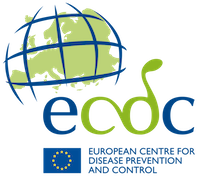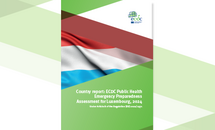Country report: ECDC Public Health Emergency Preparedness Assessment for Luxembourg, 2024 - Under Article 8 of the Regulation (EU) 2022/2371
ECDC has the responsibility, in coordination with relevant Union agencies and bodies, to conduct Public Health Emergency Preparedness Assessments of all European Union and European Economic Area (EU/EEA) countries every three years regarding the state of implementation of their national prevention, preparedness and response planning. This report presents the findings and recommendations of the first assessment conducted in Luxembourg.
Executive summary
Background
The aim of the Public Health Emergency Preparedness Assessment, as mandated in Article 8 of the EU Regulation on serious cross-border threat to health, is to improve prevention, preparedness and response planning in EU/EEA countries through the implementation of evidence-based recommendations following individual country assessments. This report presents the findings and recommendations of the first assessment conducted in Luxembourg. As specified in the Regulation, each EU/EEA country will undergo an assessment every three years, with the first cycle of these occurring between 2024 and 2026. This involved a desk review of relevant documents, followed by a five-day mission between 2 to 6 December 2024. As per the assessment methodology, all the 16 capacities included in the Article 7 self-assessment questionnaire were assessed, with five of them considered in-depth. The five capacities assessed in depth were Laboratory; Surveillance; Health Emergency Management; Antimicrobial resistance (AMR) and healthcare-associated infections (HAIs); and Zoonotic diseases and environmental threats.
Key findings
The ECDC assessment confirmed the results of the Article 7 self-assessment, highlighting significant strengths in the public health infrastructure for managing health crises. Luxembourg is able to reallocate resources in a timely and effective way when needed, scale up laboratory and surveillance capacities, establish new processes, and coordinate activities across various sectors during health crises. Furthermore, there are provisions for updating the legal framework underpinning response mechanisms during crises, thus ensuring timely decision-making as needed. Despite the high adaptability of processes, there is limited interoperability between databases and digital systems. This, coupled with a limited number of experienced specialised public health staff, could represent a weakness during major health crises. In such situations, reliance on pre-existing collaboration mechanisms can prevent acute straining of the healthcare and public health capacities. In addition, the limited interoperability can be mitigated by formalising and testing collaborations between the various players involved in a public health crisis, including partners from neighbouring countries. The ability to generate and monitor epidemiological indicators, such as severity, to inform decision-making can be strengthened by integrating surveillance as defined by the International Health Regulation (IHR) and Serious Cross-Border Threats to Health (SCBTH) Regulation (e.g. SARI) with other data sources, and by exploiting the high degree of health information digitalisation.





